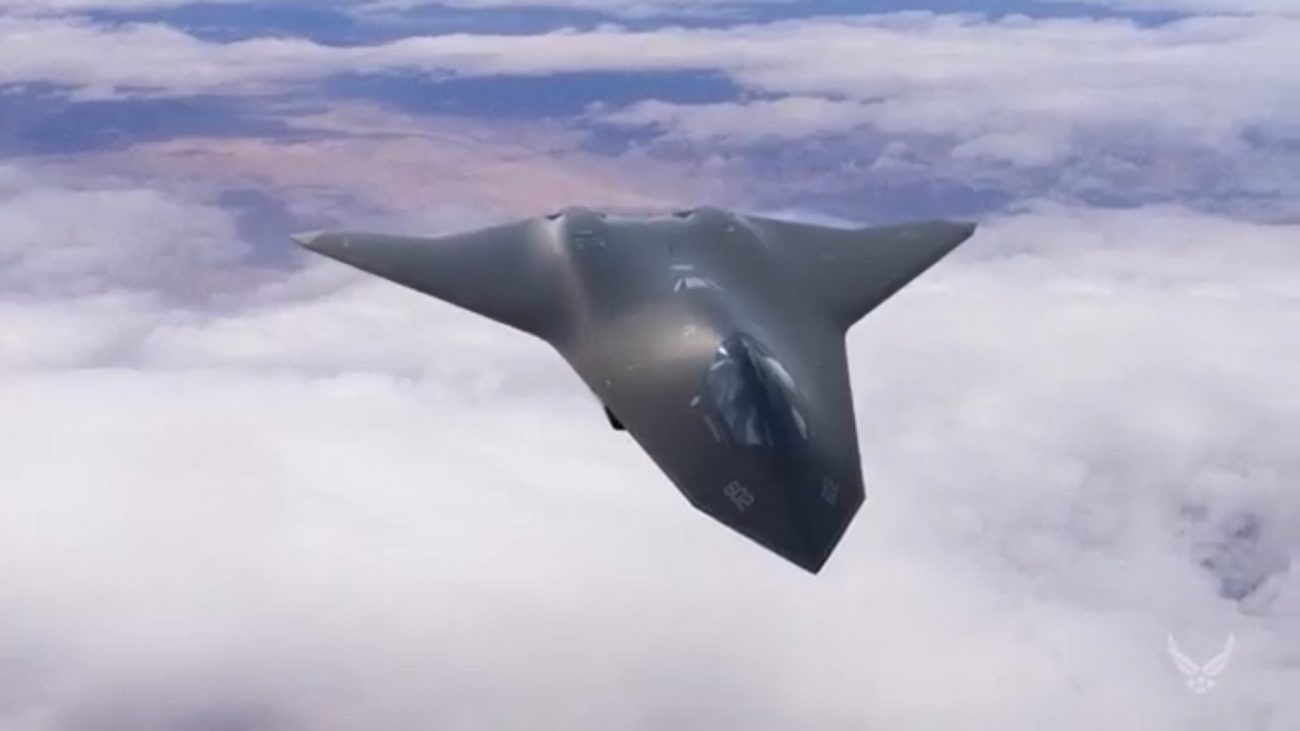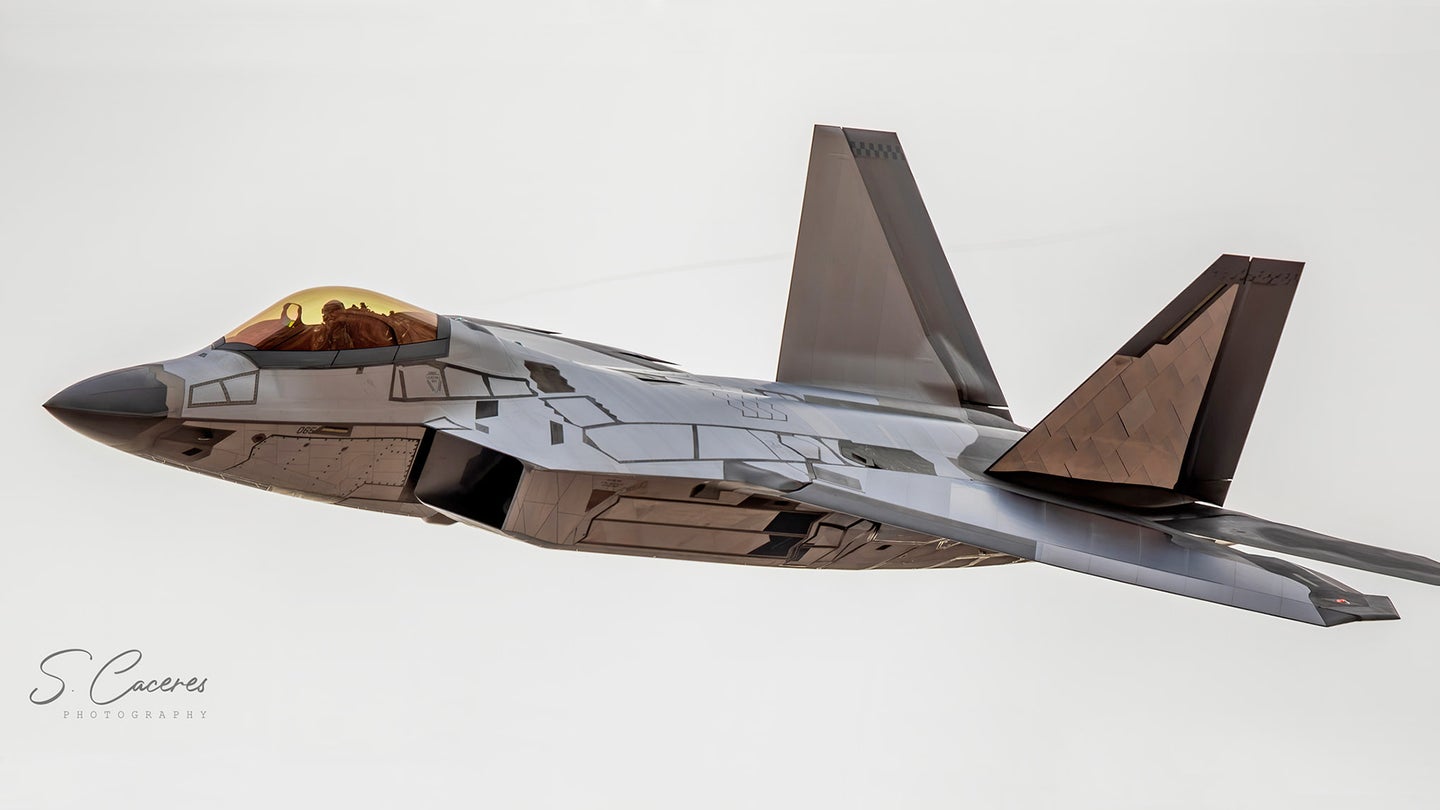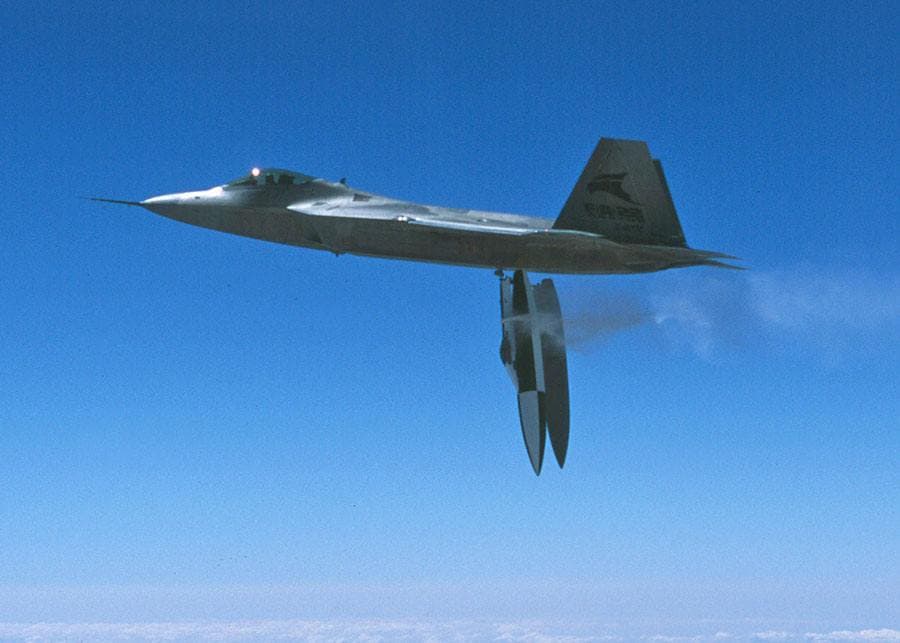The United States Air Force (USAF) appears to be using the F-22 Raptor as a stop-gap solution to test new technologies that are being developed under the Next Generation Air Dominance (NGAD) program.
US ‘Hits Back’ At China With Air-Breathing Missile; Sets A Deadline To Field Its Hypersonic ‘HALO’ Weapon
The Pentagon’s FY 2023 Budget request has provided some interesting insights that may explain a sudden uptick in the testing of new features on the F-22 Raptor which the US Air Force plans on replacing with NGAD once it is ready.
The primary role of the NGAD aircraft will be air dominance but it will possess the ability to strike ground targets as well.
Much more than a ‘new fighter’, NGAD is a broad initiative aimed at creating a ‘system of systems which will include unmanned drones, manned jets, and a new generation of networking technologies.
Air Force Secretary Frank Kendall recently explained, “NGAD must be more than just the next crewed fighter jet. It’s a program that will include a crewed platform teamed with much less expensive autonomous un-crewed combat aircraft, employing a distributed, tailorable mix of sensors, weapons, and other mission equipment operating as a team or formation.”

That said, it is worth taking a look at how the fifth-generation F-22 Raptors are perhaps involved in the development of NGAD before being replaced by the latter.
According to the ‘Advanced Technology Development (ATD) section of the F-22 Squadrons in the Pentagon’s budget documents, there will be a two-way ‘technology transfer’ between the F-22 and NGAD.
This is quite remarkable as no other aircraft section in the budget, including the F-35s, had any language of this nature.
Chilling Pics Of Russia’s ‘Sizzler Missiles’ Getting Loaded On A Submarine Ahead Of Victory Day Parade Raises Alarm
This means that not only will the F-22 be used for the trial of NGAD technologies, the Raptors will also adopt technologies developed under the NGAD program perhaps to speed these capabilities to the frontline long before the NGAD platform can deploy them so that they can be fine-tuned and de-risked.
This may help explain some of the modifications that have been observed in recent months on F-22s used for test and tactics development.
Metallic Coatings
One of the major modifications observed includes at least three types of metallic-like coatings that are thought to reduce the ‘infrared signature’ of the aircraft from the frontal and side hemispheres without compromising the aircraft’s Radio Frequency (RF) stealth capability.
If true, this would reduce the effectiveness of infrared search and track (IRST) which depends on the aircraft’s infrared signature alone and are unaffected by the radar-evading design features on stealth aircrafts such as F-22, F-117, and F-35.

While these stealth platforms do have inbuilt measures to help reduce their infrared signature, it is still difficult to hide them from increasingly advanced IRSTs that are proliferating around the globe and are present on most of the fighter aircraft being flown by peer adversaries.
These types of coatings have also been seen on F-117s and a Navy F-35 in recent months; however, F-22 appears to be spearheading the operational testing effort of this capability. Some of the coatings on F-22 are remarkably intricate mosaic-like arrangements.
Mysterious Pods – IRST & EW
Earlier this year, an F-22 jet emerged with low observable pods under its wings which have not been observed before.
Reports suggest that these pods are most probably to provide the IRST capability to the Raptors which the F-22s were originally planned to have under the Advanced Tactical Fighter (ATF) program but the plan was later dropped on cost grounds. The pods can also be related to electronic warfare (EW) capability.
However, the FY23 budget documents have mentioned upgrades involving IRST sensor capabilities and EW to the F-22 to maintain its air superiority and preserve its “first look, first shot, and first kill capability.”
The IRST pods can provide the Raptor with a significant capability to detect and track other aircraft at long ranges, including stealthy ones, that are passive and immune to electronic warfare.
That said, it cannot be said for certain that these highly visible features on test-related F-22s are connected to NGAD but they may very well be.
Low Drag Tanks & Pylons
Another major capability listed in the documents is “low drag tanks and pylons” which is quite interesting, as it is also connected to the NGAD technologies test and integration arrangement.
The F-22’s range has always been its biggest weakness which it overcomes using the non-stealthy 600-gallon fuel tanks carried on the underwing pylons, for extended ranges in missions where stealth is not a primary necessity.
However, if the operation requires stealth, the pylons can be jettisoned to allow the F-22 to regain almost stealth capability if not complete – the connection points and plumbing would still be partially exposed which can become ‘hotspots’ in its Radar Cross Section (RCS).

So, the new effort is aimed at increasing the range of the F-22 by integrating a more efficient tank design and a pylon without disrupting its radar cross-section too much when compared to a clean F-22 once the tanks and pylons are jettisoned.
The range is critical for executing combat operations over large distances of the Pacific against a major opponent – China.
There are probably going to be two variants of NGAD, one which may be a manned aircraft with long-range missions for the Indo-Pacific and the other one more oriented to the relatively short ranges between possible battle areas in Europe.
This new technology would likely be integrated into the manned NGAD platform which is being designed to fight more independently of refueling assets over many large distances.
Transition From F-22s To NGAD
The USAF has initiated the cut down of its F-22 fleet to get rid of it entirely by the 2030s once the NGAD is ready. The FY23 budget proposal plans to slash 33 F-22A Raptors which would reduce the total F-22A fleet size from around 186 to some 153.
These are older Block 20 jets that have largely been downgraded to training and other non-combat duties already. The USAF believes that instead of spending money on upgrading these jets to the latest standard, the funds could be allocated to modernizing the F-35As and upgrading other F-22As alongside the development of advanced NGAD aircraft.
So basically, the idea is to cannibalize these 33 F-22s, none of which are combat coded, to help bolster a small but more capable fleet of remaining F-22 fleet. This should keep the F-22 fully relevant until the NGAD can be delivered.
- Written by Tanmay Kadam/EurAsian Times Desk
- Contact the author at etdesk@eurasiantimes.com
- Follow EurAsian Times on Google News




